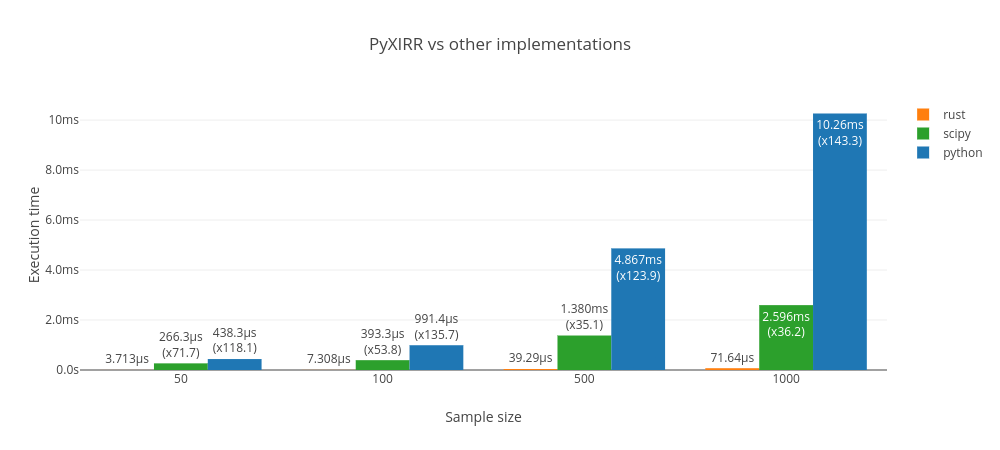Think your employer’s life insurance has you covered? Think again.
Most workplace plans fall short of long-term needs, leaving potential gaps in protection. By supplementing with a term life insurance policy, you can ensure your family’s future is truly secure. View Money’s Best Life Insurance list to find coverage starting at just $7/month.
🚀 Your Investing Journey Just Got Better: Premium Subscriptions Are Here! 🚀
It’s been 4 months since we launched our premium subscription plans at GuruFinance Insights, and the results have been phenomenal! Now, we’re making it even better for you to take your investing game to the next level. Whether you’re just starting out or you’re a seasoned trader, our updated plans are designed to give you the tools, insights, and support you need to succeed.
Here’s what you’ll get as a premium member:
Exclusive Trading Strategies: Unlock proven methods to maximize your returns.
In-Depth Research Analysis: Stay ahead with insights from the latest market trends.
Ad-Free Experience: Focus on what matters most—your investments.
Monthly AMA Sessions: Get your questions answered by top industry experts.
Coding Tutorials: Learn how to automate your trading strategies like a pro.
Masterclasses & One-on-One Consultations: Elevate your skills with personalized guidance.
Our three tailored plans—Starter Investor, Pro Trader, and Elite Investor—are designed to fit your unique needs and goals. Whether you’re looking for foundational tools or advanced strategies, we’ve got you covered.
Don’t wait any longer to transform your investment strategy. The last 4 months have shown just how powerful these tools can be—now it’s your turn to experience the difference.

Investors frequently encounter situations where cash flows are received or invested on uneven schedules — like income from rental properties, infrequent dividends, or irregular profit-sharing in a venture. Calculating the return on these investments accurately requires taking the timing of cash flows into account. This is where XIRR (Extended Internal Rate of Return) becomes indispensable.
Unlike the standard IRR, which assumes cash flows occur at equal intervals, XIRR accommodates variations in timing. In this article, we’ll delve into what XIRR is, why it’s an essential tool for investors, and demonstrate how to compute it using Python.
Over the last seven elections, this asset class has outpaced the S&P 500
Instead of trying to predict which party will win, and where to invest afterwards, why not invest in an ‘election-proof’ alternative asset? The sector is currently in a softer cycle, but over the last seven elections (1995-2023) blue-chip contemporary art has outpaced the S&P 500 by 64% even despite the recent dip, regardless of the victors, and we have conviction it will rebound to these levels long-term.
Now, thanks to Masterworks’ art investing platform, you can easily diversify into this asset class without needing millions or art expertise, alongside 65,000+ other art investors. From their 23 exits so far, Masterworks investors have realized representative annualized net returns like +17.6%, +17.8%, and +21.5% (among assets held longer than one year), even despite a recent dip in the art market.*
Past performance not indicative of future returns. Investing Involves Risk. See Important Disclosures at masterworks.com/cd.
What Is XIRR, and Why Is It Important?
Suppose you invest $2,000 in a project in January, receive a payment of $400 in March, another $700 in August, and finally recover $2,800 in December. How do you determine your actual return, factoring in the precise dates of these cash flows? Enter XIRR — a calculation that provides an annualized rate of return, adjusted for timing differences.
This is especially crucial for:
Mutual fund investors utilizing irregular contributions and withdrawals.
Property owners who earn sporadic rental income or capital gains upon sale.
Venture capitalists tracking varied injection and realization schedules.
Accurately assessing your investments’ performance under such conditions requires a specialized approach, which Python and the scipy library make both accessible and efficient.
How Does XIRR Work?
XIRR calculates the annualized rate at which the Net Present Value (NPV) of all cash flows equals zero. Mathematically:
Where:
The -th cash flow amount (negative for outflows, positive for inflows).
The time difference in years (or fractions thereof) between -th and the initial cash flow.
The unknown rate of return we aim to calculate.
Finding involves iterative solving — a task well-suited for Python and optimization libraries.
Calculating XIRR in Python
Python’s scipy.optimize module provides the tools needed to compute XIRR efficiently. Below, we’ll explore two examples to help clarify.
Step 1: Setting Up
Ensure you have the necessary library installed by running:
pip install scipyStep 2: Implementing an XIRR Function
We’ll use scipy.optimize.newton to find the rate that balances the NPV equation:
import numpy as np
from scipy.optimize import newton
from datetime import datetime
# Function to compute XIRR
def compute_xirr(cashflows, cashflow_dates):
# Convert dates into days since the first date
day_counts = [(date - cashflow_dates[0]).days for date in cashflow_dates]
# Define NPV function for XIRR
def npv_equation(rate):
return sum(cash / ((1 + rate) ** (days / 365)) for cash, days in zip(cashflows, day_counts))
# Solve for the rate that zeroes the NPV
return newton(npv_equation, x0=0.1) # Initial guess: 10%cashflows: List of monetary amounts (positive/negative).cashflow_dates: Corresponding dates of each transaction.npv_equation: Core calculation balancing NPV based on a guessed rate.newton: Iterative solver for finding roots of equations.
Example 1: A General Investment Scenario
Let’s say you invested $1,500 on January 1, 2023, and received returns at irregular intervals:
cashflows_investment = [-1500, 400, 800, 1900]
transaction_dates = [
datetime(2023, 1, 1),
datetime(2023, 4, 1),
datetime(2023, 9, 1),
datetime(2024, 1, 1)
]
# Calculate the XIRR
annualized_return = compute_xirr(cashflows_investment, transaction_dates)
print(f"Annualized Return (XIRR): {annualized_return:.2%}")Here, Python computes an accurate return by considering every cash flow’s specific timing.
Example 2: A Real Estate Investment
Consider an initial property investment of $60,000, two rental payments of $6,000 in six-month intervals, and a final sale value of $75,000 after 18 months:
property_cashflows = [-60000, 6000, 6000, 75000]
property_dates = [
datetime(2022, 1, 1),
datetime(2022, 7, 1),
datetime(2023, 1, 1),
datetime(2023, 7, 1)
]
# Compute the property XIRR
property_return = compute_xirr(property_cashflows, property_dates)
print(f"Property Investment XIRR: {property_return:.2%}")By incorporating all inflows, outflows, and dates, you’ll have a comprehensive view of your return.
Why XIRR Enhances Investment Analysis
XIRR brings several advantages to return analysis:
Precision with Irregular Cash Flows: Reflects actual investment performance.
Annualization: Standardizes return metrics across different investments.
Comparison Across Assets: Useful when benchmarking portfolios, real estate ventures, or alternative assets with varied income patterns.
Expanding XIRR for Advanced Use Cases
With some tweaks, you can adapt the function for bulk analysis, portfolio breakdowns, or sensitivity testing.
Portfolio XIRR Calculation
Evaluate returns for multiple investments collectively:
# Example portfolio data
portfolio_cashflows = {
"Real Estate": [-80000, 10000, 15000, 100000],
"Stock Investments": [-50000, 12000, 13000, 70000]
}
portfolio_dates = {
"Real Estate": [
datetime(2021, 1, 1),
datetime(2021, 7, 1),
datetime(2022, 1, 1),
datetime(2022, 12, 31)
],
"Stock Investments": [
datetime(2022, 2, 1),
datetime(2022, 8, 1),
datetime(2023, 2, 1),
datetime(2023, 8, 1)
]
}
# Compute XIRR for each investment
for asset, flows in portfolio_cashflows.items():
asset_dates = portfolio_dates[asset]
asset_xirr = compute_xirr(flows, asset_dates)
print(f"{asset} Annualized Return (XIRR): {asset_xirr:.2%}")Conclusion
XIRR serves as an invaluable tool for assessing returns when investments have uneven cash flows. Its flexibility extends across various asset classes and investment styles, offering unparalleled accuracy. By leveraging Python, you not only demystify the computation but also make it scalable for more extensive analysis.
Start applying this powerful technique to understand your investments better, refine strategies, and optimize your portfolio for higher performance!




